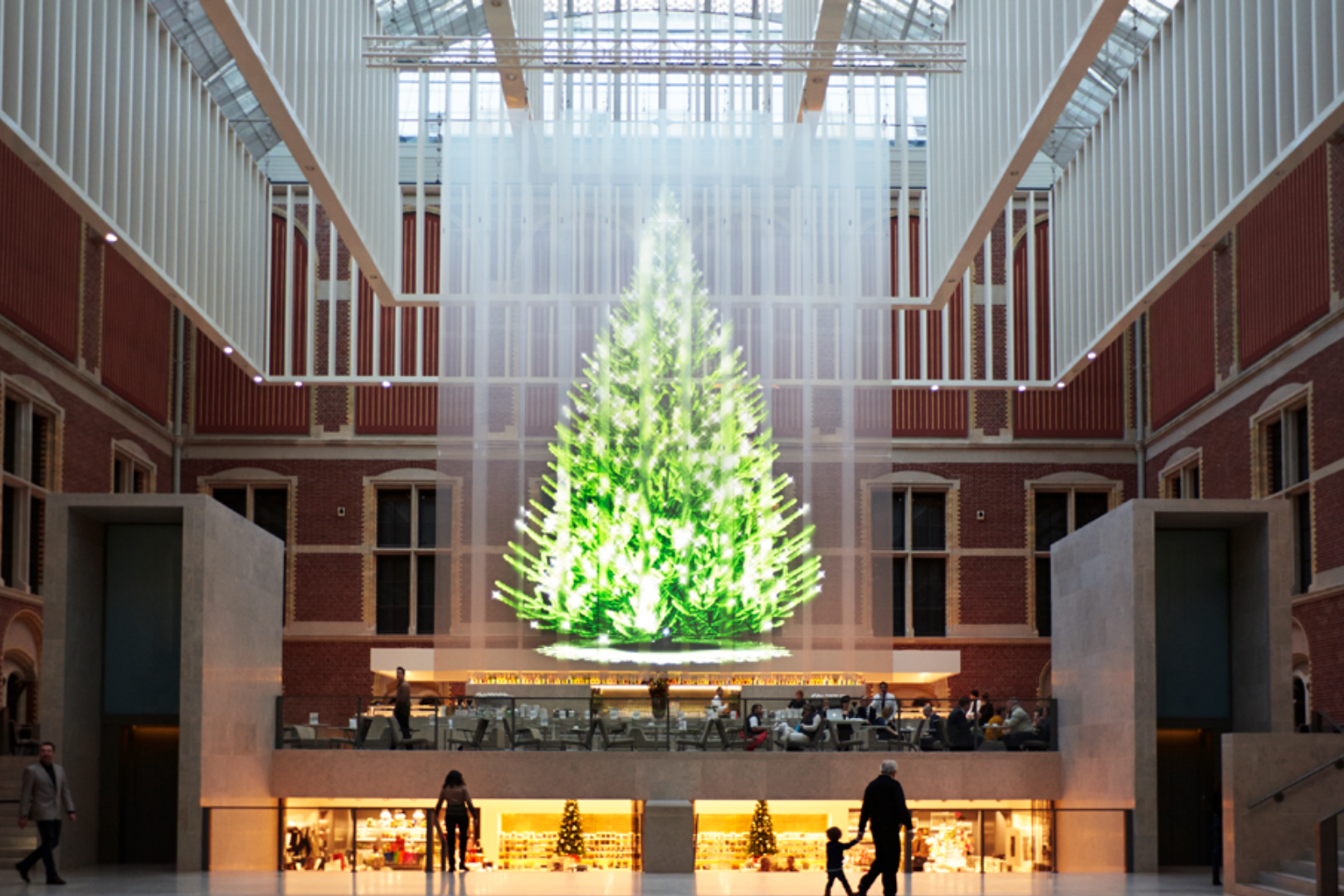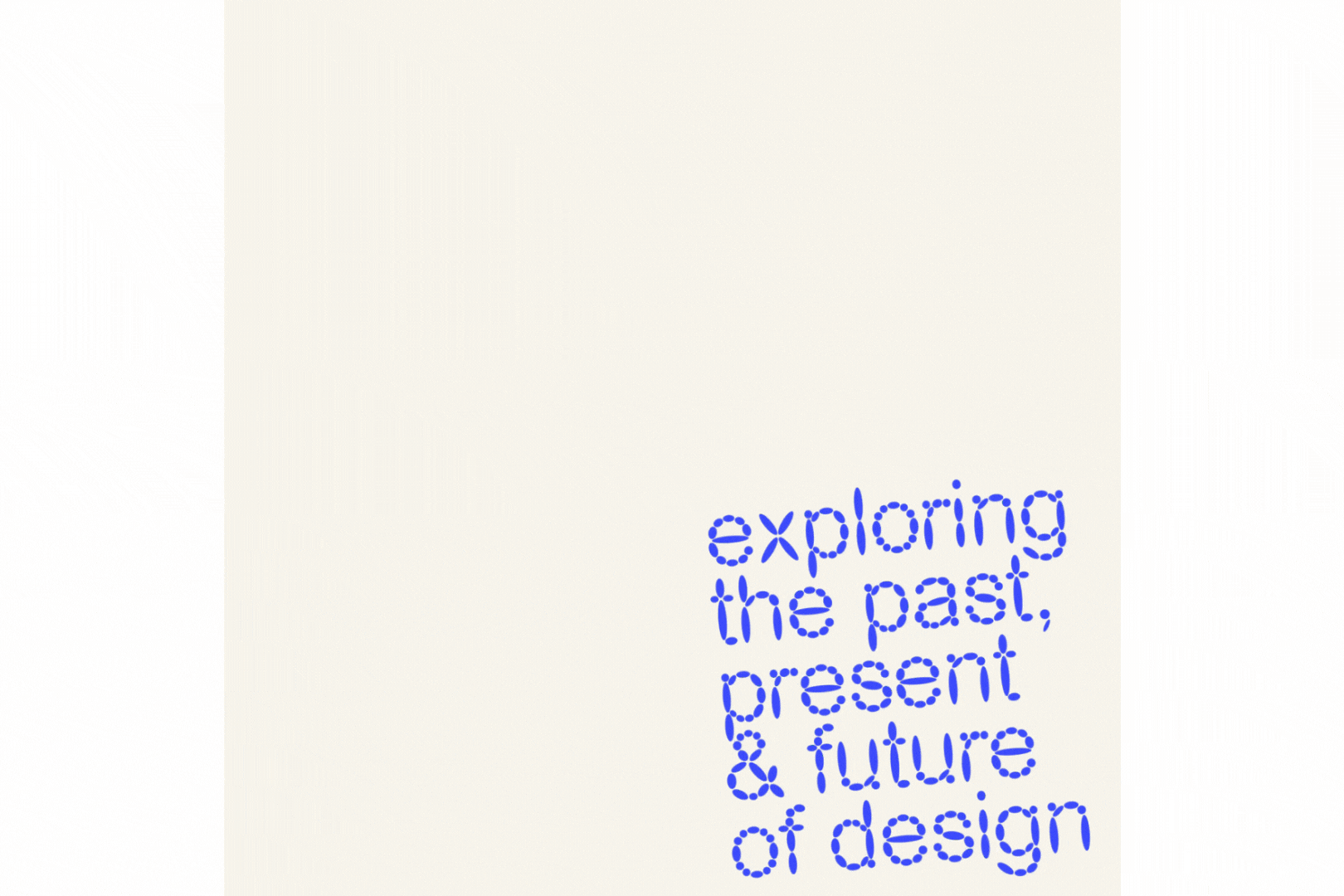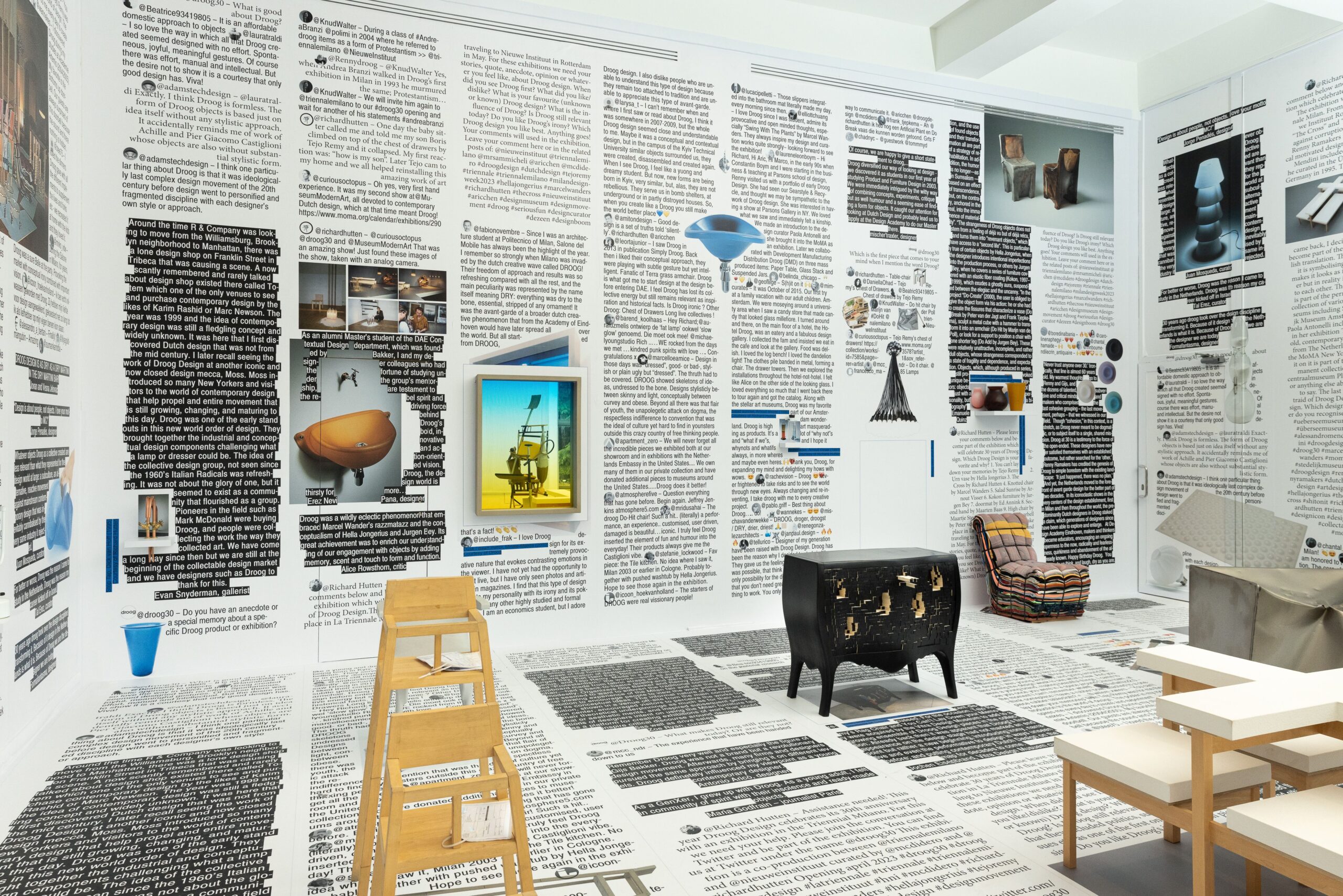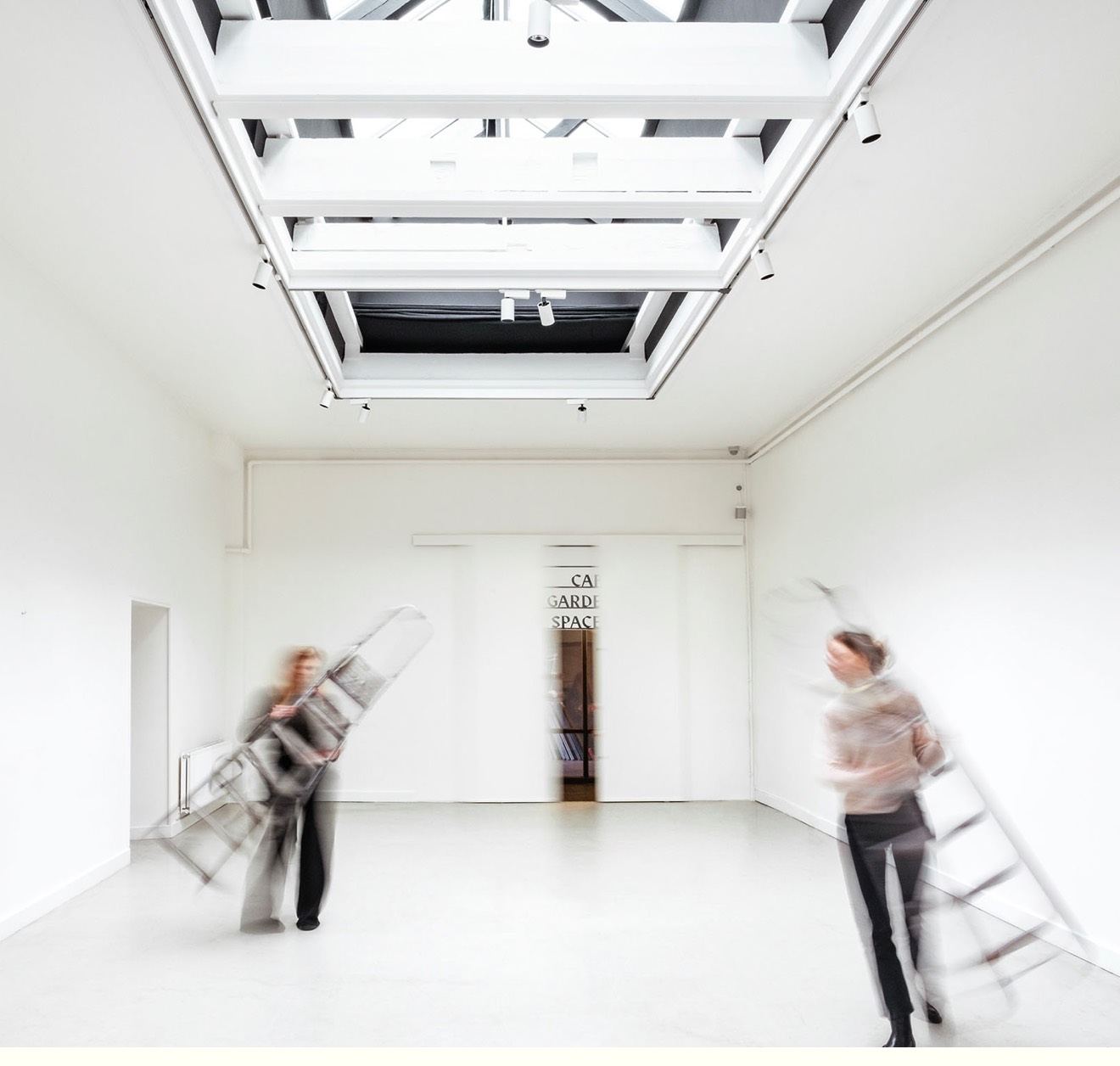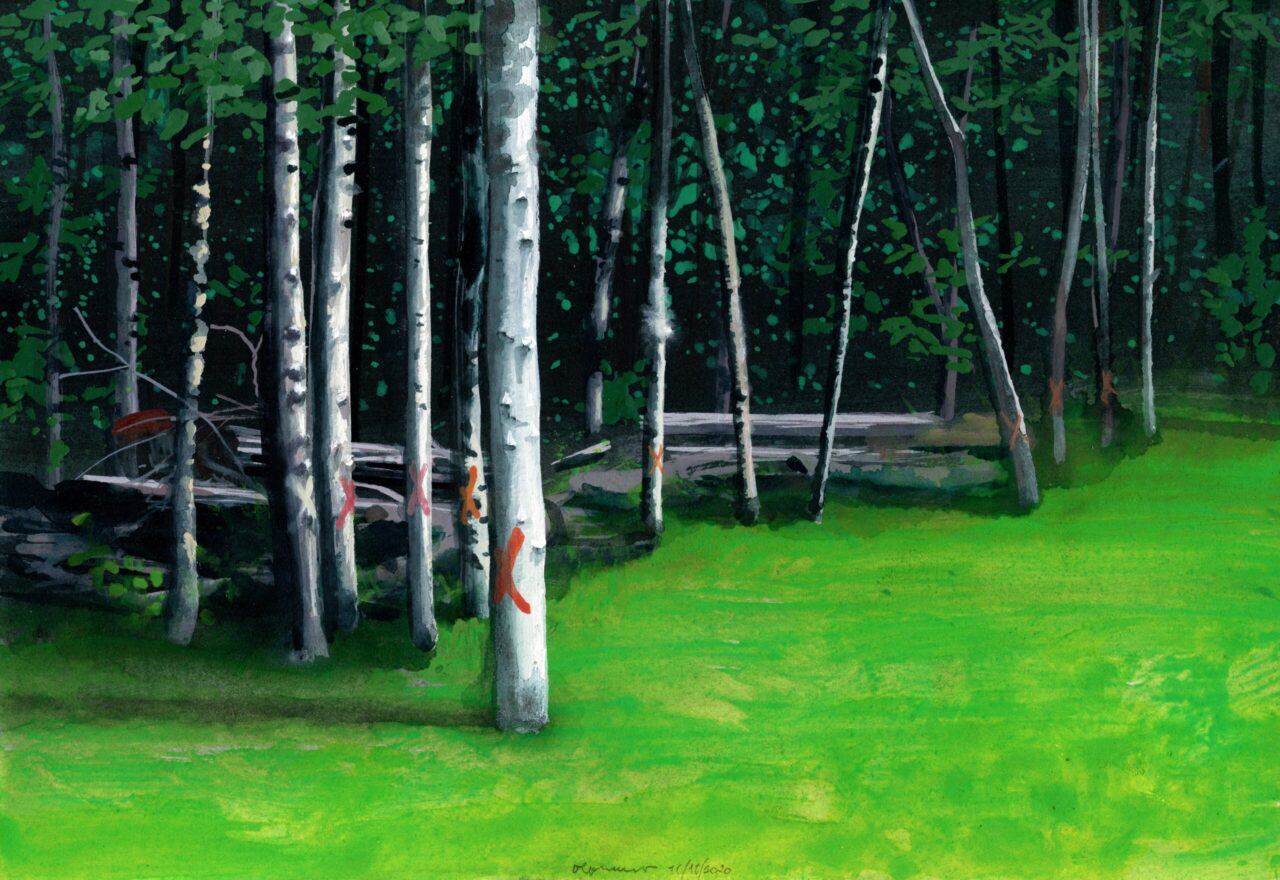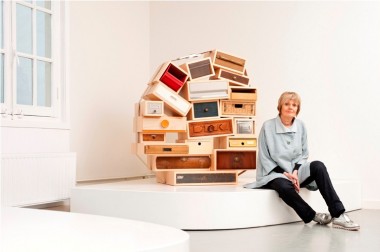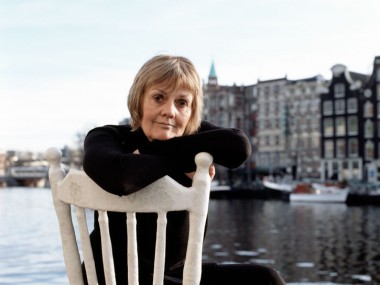Tag: Renny Ramakers
Het Nieuwe Instituut: Design Day
Nieuwe Instituut warmly invites you to Design Day! Join us as we welcome contemporary makers, design practitioners and archivists to share innovative projects and conversations on the field of (Dutch) design and design heritage.
Design Day will feature special detours through the installations Archives at Risk and the Droog30. Design or Non-design?; a panel discussion with international pioneering archivists and a reflection on the legacy of design institutions Premsela and the Netherlands Design Institute; a conversation moderated by the Droog30. Design or Non-design? curators, with an intervention by The New Stijl. The Design Night party will close off the day with dancing until midnight.
Programme
14:30-16:00 Future Archives: New Approaches to Preserving Design
How will we remember today’s most exciting designers in 50 years? And how much do we know about who created the work that has inspired today’s cutting-edge design? In the Netherlands, and globally, design and digital culture archives are under threat. Fortunately, archivists are finding innovative ways to preserve these vital records and make them accessible to new audiences. With: James Parnell from Pirate Bay Archive, Kinda Ghannoum & Sally Alassafen of Syrian Graphic Design Archive and Joel Derksen & Patrick Pittman of Nor: A Living and Open Commons of Canadian Design. Moderated by Alice Twemlow.
17:00-18:00 Revisiting Design Institutions: the Netherlands Design Institute and Premsela
Aric Chen, Nieuwe Instituut’s General and Artistic Director, talks to some of his predecessors: the former directors of the Netherlands Design Institute and Premsela, which was controversially merged with other institutions to form (Het) Nieuwe Instituut in 2013. Els van der Plas, Dingeman Kuilman and John Thackara will reflect on how design has changed since then, and how design institutions might change with it.
19:30-21:00 Design Movements: Droog & The New Stijl
A dual event about design movements, featuring the Droog30. Design or Non-design? installation and design platform The New Stijl. Aric Chen will moderate a conversation with Droog30. Design or Non-design? curators Maria Cristina Didero and Richard Hutten, Droog founders Renny Ramakers and Gijs Bakker together with Marco Sammicheli, Director of Museo del Design Italiano amongst others. The talk will include a contribution by The New Stijl platform of creatives as they share their kaleidoscopic visions on design as a practice of the future.
20:00-23:59 Design Night
Visit all our exhibitions until late, enjoy a cocktail at the bar of Het Nieuwe Café and dance until midnight to the sounds of DJ Blvk Nola from Rotterdam collective Blush Soundsystem!
All Day
Together with our detour guides – Nieuwe Instituut’s team of tour guides – you can experience new ways of looking, thinking and designing. The detours will take you on an expedition through the installations Archives at Risk, Droog30. Design or Non-design? and the building of the Nieuwe Instituut.
Dive into the world of Gerrit Rietveld and other iconic designers whose work is included in the National Collection for Dutch Architecture and Urban Planning.

Archives at Risk during Dutch Design Week 2022. Photo: Jeph Francissen
Nieuwe Instituut: Droog30. Design or Non-design?
Visit Droog30, an installation about one of the most talked-about of all design labels. In this installation, we see the stories behind Droog’s striking furniture, home accessories, lighting and other products, and feel its impact. The project is curated by Maria Cristina Didero and Richard Hutten.
Bank ‘The Cross’ by Richard Hutten for Droog Design, 1994. Photo courtesy of Richard Hutten.
Expect bold statements like Tejo Remi’s 1991 Chest of Drawers, made from finds that he tied together with a strap. Or the cube-shaped Do Hit Chair by Marijn van der Poll, which the buyer has to literally sledgehammer into an armchair using the tool provided. From Marcel Wanders’ 1996 Knotted Chair to Richard Hutten’s recent Glass Lantern, the name given to the movement by curator Renny Ramakers and designer Gijs Bakker in 1993 is always fitting.
In the installation, the designs are placed in a kind of spatial translation of a social media feed. With this, the curators make the Droog mentality both tangible and comprehensible – ever unafraid of strong reactions and still swimming against the current.
If today’s social media had existed 30 years ago, Droog would certainly have known what to do with it. With its combination of social themes, unexpected finds, magnetic visual language and playful humour, the designers forming this loose-knit collective would surely have had fun with Droog’s followers. The aim was to create remarkable designs for everyday objects, to make the ordinary extraordinary. You could say they were the original design influencers. When they debuted under the name Droog at the 1993 Salone, their objects were audacious and unconventional; now, they are considered icons of ‘Dutch Design’. So how would people react today to Droog’s designs, which were once so controversial and later became models for the mainstream? The installation can be seen from May in the Nieuwe Instituut in Rotterdam.
“Toen Droog in Milaan Dutch Design presenteerde, ging er een schok door de stad.” – NRC, 30 maart 2023
“By happy coincidence, 2023 is also the 30th anniversary of the Dutch collective Droog Design” – The New York Times, 11 April 2023

Tejo Remy, Rag Chair. Foto: Lisa Guadaire
More information
Droog30. Design of Non-design? is a collaboration between Nieuwe Instituut, Droog en Triennale Milano. The installation is on view at Triennale Milano from April 15-23, and at the Nieuwe Instituut in Rotterdam from May 2 to August 27.
About Nieuwe Instituut
Nieuwe Instituut is the Netherlands’ national museum for architecture, design and digital culture. Located in the city of architecture, Rotterdam, in the Museum Park with Kunsthal Rotterdam and Depot Boijmans Van Beuningen as neighbours, Nieuwe Instituut has various exhibition spaces, a museum shop, a museum café (with the city’s loveliest terrace), an auditorium, educational spaces and a garden. The impressive architecture collection that the institute manages can be freely consulted in the Research Centre.
Nieuwe Instituut focuses on important social developments, such as the housing shortage, the energy transition, the rise of artificial intelligence, mobility, and the use of public space. Designers, including architects and digital makers, can make important contributions to these developments. Nieuwe Instituut showcases the work of designers, brings people into contact with each other, and collects, develops and shares knowledge.
Nieuwe Instituut looks after the history of design. The National Collection for Dutch Architecture and Urban Planning is one of the largest architecture collections in the world. The institute’s depot contains four million items. In addition, the institute is part of a network that works to preserve design archives and garden and landscape architecture archives. The collection features in research and exhibitions at home and abroad.
The past is a source of inspiration for current issues and for shaping the future. In its programme, Nieuwe Instituut connects past, present and future. The institute pays extra attention to important events and developments that have been neglected in the past, such as the work of women in architecture and the influence of the squatters’ movement on urban development.
Nieuwe Instituut is responsible for the Netherlands’ official contribution to the Venice Biennale of Architecture. In recent years, there have also been exhibitions and programmes of activities at the Salone del Mobile in Milan and the biennales in Shenzen, Istanbul and London.
See All This @droog
After seven years as an art magazine, See All This is stepping out from the pages and from beyond the computer screen. The art magazine is coming to Amsterdam to give new life to the legendary gallery@droog, located on Staalstraat, where the textile inspectors of the 17th century examined the color and quality of fabrics, immortalized by Rembrandt. It will become a cultural meeting place, a sanctuary, and a spot for enjoying lunch or wine with a magazine.
In this unique space, See All This will host (sales) exhibitions, dinners, and offer masterclasses, aiming to pass on ancient knowledge of materials and techniques while also allowing people to experience the mind-expanding sensation of creating things by hand.
Living with art
The guiding principle of this new adventurous endeavor is “living with art.” Indeed, art can uplift us, reassure us, ask questions, bring joy, and even, as recent groundbreaking research shows, keep us healthy (I. Ross, Your Brain on Art: How the Arts Transform Us, March 2023). Art is not just confined to white gallery walls; it surrounds us in our daily lives. Therefore, See All This aims to create a relaxed, homely, and studio-like atmosphere where plants, people, animals, and art come together.
The heart of everything See All This does is its paper magazine, and the themes will be physically translated into the Gallery. The space will constantly transform by collaborating with different international guest curators – simultaneously curating their theme issues – such as landscape designer Piet Oudolf, architect Bijoy Jain, and curator Catherine de Zegher.
Amsterdam’s Highline
Piet Oudolf’s most famous garden is the Highline in New York. This year, Amsterdam is getting its own mini-Highline. Exclusively for See All This, Oudolf has designed a 0.75 x 16-meter-long garden against the facade of @droog on Groenburgwal: a gift to @droog and the city of Amsterdam. This southeast-facing garden has already been planted.
“In a time of change, Droog is changing too. In every corner of @droog, our past is visible, but in the true spirit of Droog, we are also open to new ideas. See All This creates a beautiful magazine, and I can imagine how they will enthusiastically breathe new life into our unique space.”
– Renny Ramakers
About See All This
See All This is an art magazine that appears quarterly in print. An enthusiastic and captivating guide featuring special interviews and adventurous background stories about art, photography, fashion, nature, and travel. Since March 2023, See All This has been housed at @droog, where it curates (sales) exhibitions, dinners, and masterclasses in the gallery space. “Paradise Found” is their inaugural exhibition at @droog.
Exhibition Olphaert den Otter: Reality Check
Reality Check is a solo exhibition by visual artist Olphaert den Otter (Poortugaal, 1955). The exhibition features 28 paintings in egg tempera on paper and canvas/panel, from the series World Stress Painting, Home Made, and Postcode. Most of these have never been shown before. They form a bridge between classical landscape painting and contemporary subject matter. This exhibition shows how beauty and engagement can reinforce each other.
Olphaert den Otter’s paintings are based on reality: a report or a photo in the newspaper, a spot in the woods, the meagre possessions of an unhoused person. Yet the works are not realistic. At will, Den Otter omits or adds details from the image. For instance, he consistently leaves out all the people: “There is no story. There is image.”
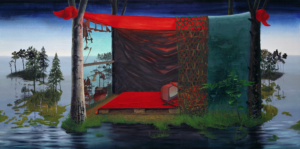
ABOUT OLPHAERT DEN OTTER
Olphaert den Otter (born 1955, Poortugaal) studied at the Willem de Kooning Academy in Rotterdam. Den Otter’s career spans over 40 years as a visual artist, a painter, animator, and, in the past, teacher at various academies. His work is included in various museum collections including the Museum Boijmans Van Beuningen, Centraal Museum Utrecht, Stedelijk Museum Amsterdam and Kunstmuseum Den Haag, Museum Belvédère Heerenveen. Den Otter participated in group exhibitions in the Netherlands, Germany, Switzerland, the UK, Belgium, and Australia. Besides his practice as a visual artist, he is a countertenor in the Rhetorical Quartet and lectures on cultural-philosophical themes. Olphaert den Otter lives and works in Rotterdam.
The exhibition Olphaert den Otter – Reality Check is on view from 10 November 2022 to 9 January 2023.
For more info, click here
Renny Ramakers will be taking part in a major international Architecture and Design Symposium in Munich
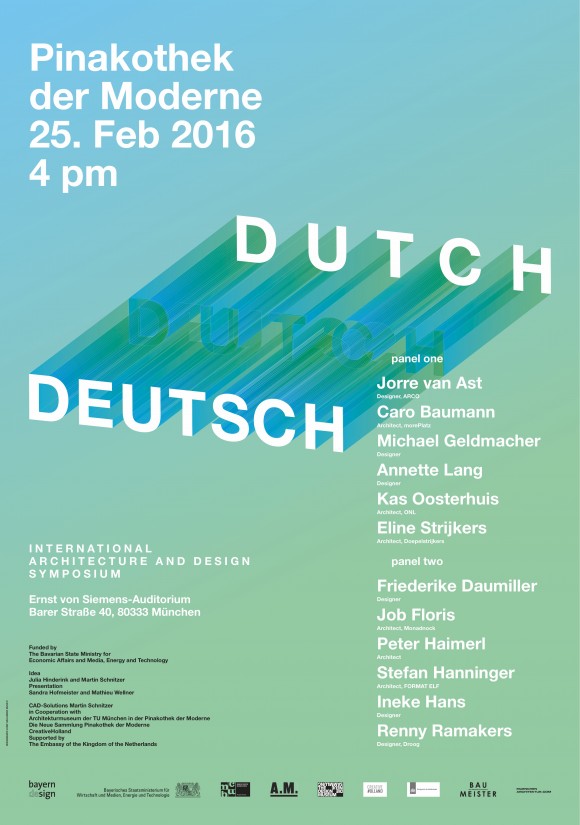
Renny Ramakers, co-founder of Droog, will be taking part in a major
international Architecture and Design Symposium in Munich, Germany on the
25th of February, 2015 from 16.00 – 20.00.
*About the Symposium:*
As a partner country of MCBW, The Netherlands is the most innovative and
important location for design in Europe. The Symposium „DeUTsCH“ will look
at the differences, similarities and potential synergies of the Netherlands
and Germany with regard to architecture and design.
During two panel sessions three Designer and three Architects from each
country will discuss the following questions:
Does Design and Architecure align differently in the Netherlands than in
Germany?
What are the diverse approaches of a designer and an architect?
How different or similar are they dealing with material and scale?
Where does architecture and design meet?
Read more on the program here:
http://www.mcbw.de/mcbw-2016/programm/liste/detailseite/event/deutsch.html
*Event details:*
When: Thu, 25.02.2016
16:00 – 20:30
Where: Pinakothek der Moderne | Ernst von Siemens-Auditorium
Barer Str. 40
80333 München
The event is in English.
Social City (beta version) at Beijing Design Week 2015
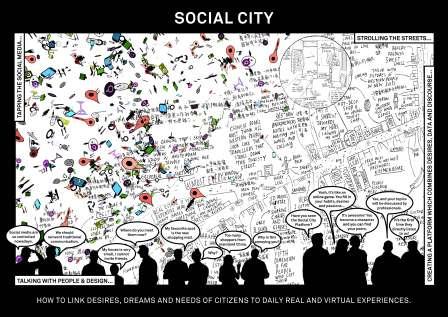
At the Next City Living Lab during the Beijing Design Week (23/9 – 7/10, 2015) the beta version of the Social City online platform will be launched.
Cities are becoming larger and larger, smarter and smarter. Technology is supposed to solve all city problems. Governments, companies and urban planners are eager to do so. But what about citizens? What do they think? Can they have a say? In Social City they have!
Social City is an online platform which, via a game-like experience, invites CITIZENS all over the world to share their dreams, desires, and needs. This input will generate a virtual city. People can build a house, define their neighborhood, envision their community, arrange their mobility, choose their economy, and can even decide how to rule Social City.
Multiple choices are possible. People can check out what other Social Citizens are dreaming of doing and being. If they become inspired by them and want to revise their city, they could simply create a new avatar and play the game again. The more people participate, the more Social City will grow.
In Social City the citizens take the lead, and experts in architecture and city planning are invited to reflect on the shared desired elements which constitute Social City. It challenges top down city planning. The platform is a unique online combination of shared dreams and desires of citizens, hard data and discourse by professionals.
The platform is part of the Social City project at Shenzhen Urbanism/Architecture Bi-City Biennale (UABB, 1/12/205 – 1/3/2016), curated by Renny Ramakers (Droog Foundation/Design+Desires).
Social City platform is curated by Renny Ramakers in collaboration with Mark van der Net (OSCity). Technical implementation: OSCity. Graphics: Thonik.
Exhibition venue in Beijing: The Nurturing House, Sanjing Hutong No. 21, Dashilar, Xicheng District, Beijing, 100051
Keynote by Renny Ramakers in Cape Town on July 9th
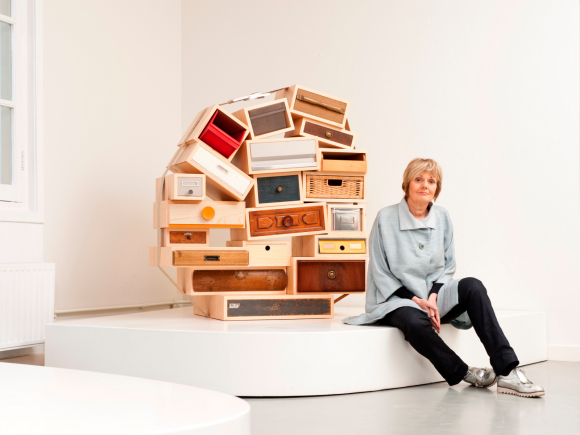
On 9 July, droog co-founder Renny Ramakers will give a keynote speech about designing the interior for Department of Design, the Dutch pavillion for World Design Capital Cape Town 2014.
If you’d like to attend the keyote, please enquire to [email protected] (subject to availability). For more info, visithttp://departmentofdesign.nl/events/keynote-renny-ramakers/
MCBW LECTURES – Design connects
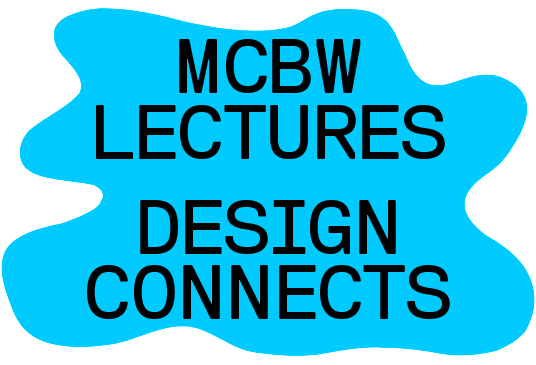
Renny Ramakers will present a lecture at the MCBW LECTURES in Munich. In line with the guiding principle of MCBW 2014, Design connects, MCBW LECTURES will serve to illustrate the key role design plays as a moderator and as a motivator, as a questioner and as a consultant. Design connects users with the environments around them. Design facilitates new perspectives for the development of products and services.
Renny Ramakers: the Best of 4 Worlds
February 26th, 2014
5:30pm – 6:45pm
The symposium
Studio-X New York hosted the Open house symposium on Saturday, April 23rd, which was fully booked.


Co-founder and director of Droog, Renny Ramakers presented the goals of Droog Lab’s series of projects, each inspired by a different location.

Charles Renfro of Diller Scofidio + Renfro presented an overview of the design process and potential outcomes for Open house.

Mark Wasiuta presented an overview of suburban developments.

Economist Heleen Mees talked about the benefits of a service economy, comparing the situation in New York to that of Amsterdam.

Author Roo Rogers discussed the rising trend in collaborative consumption.

Artist Mary Ellen Carroll discussed her experience in working in suburban areas, including her project prototype 180.




Q&A with Renny Ramakers about Droog Las Vegas
Many are surprised to hear Droog is opening in Las Vegas.
Why Las Vegas?
The Cosmopolitan of Las Vegas approached us. Initially it’s hard to see the common ground between Droog and Las Vegas, but for both, experience is important. For us it is interesting to reach a new audience, and Las Vegas is truly a unique place in the world. Sometimes reality can be wilder than fiction.
What do you think of the kind of design you see there?
One sees a totally different type of design. I believe the audience is ready for a new approach, one that establishes new borders between the design and the non-design world.
What about the themed approaches in Las Vegas?
The themed experiences are old-fashioned. You can see Las Vegas is looking for new experiences, and The Cosmopolitan of Las Vegas is breaking some new ground. But it was already happening in 2002, for example with the Guggenheim Hermitage Museum by Rem Koolhaas. Perhaps then it was too early, and now might be a better time for new developments.
What are your impressions of Las Vegas?
Whether you are eating, watching a performance at a theatre, shopping or gambling, everything in Las Vegas is about entertainment. Such a concentration of entertainment is an interesting model for me.
Any thoughts on gambling?
If one can restrict oneself, gambling can be very playful.
Can you tell us about the store design?
With each store location we take a different approach. For Droog Las Vegas, our brief to the designer, Marcel Schmalgemeijer, was that it should be a strong gesture but at the same time, be very functional. Seems obvious, but it is important that the store looks and functions like a store. We want the design to allow the products to speak for themselves and to create an experience.
Are there any future plans for the store?
There will be a program of events and new collaborations with the local context. We have some ideas so far, but are also looking forward to what Las Vegas will inspire.
Droog Las Vegas opened yesterday. See store details here.
Interview with Renny by KLM’s iFly magazine
Watch a recent interview with Renny Ramakers by KLM’s iFly magazine.
“I am not an idealist by any means. It is not my goal to create social design, but I do like it when social renewal results in innovative design.” – Renny Ramakers
Vidafine interviews Renny Ramakers
Text by Vidafine.
“Reality isn’t static anymore. It’s not a set of ideas you either have to fight or resign yourself to. It’s made up, in part, of ideas that are expected to grow as you grow, and as we all grow, century after century.” – Robert M. Pirsig, Zen: The Art of Motorcycle Maintenance,1974 , as referenced by Renny Ramakers, Co-founder and Director of Droog.
Recently, we introduced you to Droog, a conceptual design company located in Amsterdam. We mentioned the various facets of the company and how the Droog Lab is quickly becoming a globally known research hub that brings relevant solutions to its clients, and people of the world. Many of us live life hoping to one day start something that we can call our own. Few, actually go ahead and do it. After learning about Droog, I was particularly interested in the projects that this company is currently involved in, and was estatic when Co-founder and Director of Droog, Renny Ramakers, agreed to chat with us about her beginnings and her vision for the future of Droog.
idafine: After some research, we discovered that you have a history background. How did you transition into global design from what you studied in school? What drew you to this particular industry?
Renny: After studying art history I reached a point in which I wanted to impact it. Art history gave me broad perspective and critical rigour that I combined with my ability to sense what is going on at the present. Together with the Co-founder of Droog, Gijs Bakker, we noticed a movement that some designers in the Netherlands were pioneering. We gave it a title and a presence that took off, and eventually became global.
Vidafine: Knowing about the past and how things ‘used to be’ definitely can drive someone to initiate change for the future. What is your ultimate goal for Droog?
Renny: I am quite ambitious and we have many plans… I started Droog because I found it necessary to present a new spirit in design. At that time this new spirit was based on a conceptual approach. Now, one can see this approach everywhere and as I feel it, it is time for new impulses. That’s why I started the Lab. But we are also trying other directions, and are working on other models. For instance, our presentation this past April in Milan, Saved by Droog, has opened up a new way of working (by treating unwanted products as raw material for product development) and we want to continue on this path. Ultimately, I want to express that Droog is not a design collective but a company. Our company is content driven but it also wants to make profit.
Vidafine: Founding your own company is definitely a lifetime milestone. What’s your most memorable moment as Co-founder and Director of Droog? Continue reading “Vidafine interviews Renny Ramakers”
Interview with Renny Ramakers by Yatzer
Interview and text by Apostolos Mitsios for Yatzer.
What can we say about Droog design, a company that since 1993 opens new paths to creativity and has produced some of the most iconic design pieces of the last decades? Some weeks ago Workshop-Dionisis Sotovikis and Mariolopoulos-Kanaginis Foundation for the Environmental Sciences presented at the Benaki Museum, Athens, Greece, a retrospective Droog exhibition called “Greek green greet” (June 4th – July 25th 2010), being the largest Droog exhibition in the world since 2007. Athens came closer to the design world and Renny Ramakers, the heart and soul of Droog, of course could not miss the event. Yatzer was there, eager to know all those little stories hidden behind a successful company that make the difference. Renny Ramakers talked to us in the most sincere way, offering one of the most interesting encounters we have ever had. Get ready to get inside the headquarters of one of the most significant design companies of all times!
First of all, Mrs. Ramakers, did you like the exhibition at the Benaki Museum?
It is fantastic the fact that you have made everything by yourselves, I only delivered some items, it is awesome! The organizers wanted more and more products, initially they had the fear that there would not be enough products to fill the space, but finally everything went perfect. It is always very interesting to see the way other people interpret your work. Sometimes I take a look at a certain piece and I say to myself “look, I hadn’t realized it looked so nice!”. It was also so pleasant to see prototypes that I hadn’t seen for a lot of time, for years, like the Cosy chair by SMAG that we had showed at Milan many years ago and I didn’t have the chance to see it again since then.
If Droog was a child, back in 93, which would be the references that would define you? Who would be your parents, who would be your brothers and who would be your heroes?
The father and mother of my company are me and my partner Gijs Bakker, who left us recently, so I would say we are divorced (laughs)! I do not think we have many brothers and sisters because we are quite unique. The source of inspiration is the designers themselves, the children of the company. As soon as we like something, we ask directly the designer to collaborate with us. The way the designers react to an original idea of ours often makes the project much bigger. We are inspired by the designers, but the designers are also inspired by us. It is all about collaboration! There is a retro alimentation open to surprises. If you have good designers, they bring the whole project to another level.
Who was the first designer that you have collaborated with?
Jurgen Bey is very inspiring for us, he has been with us since the beginning, before we even started. He and his partner Rianne Makkink in 1992, when I was organizing small exhibitions at that time, were designing our exhibitions, but the first product was of Marcel Wanders. In 1988, after Wanders graduation from the School of the Arts Arnhem, I bought a prototype of him and this became the first product of the company. His breakthrough to fame was a chair he made for us, the Knotted Chair (1996).
Could you say you are Marcel Wanders’ design mama?
Yes (laughs), but do not tell him!
Having in mind that we often define ourselves against something, against what did you define yourself at that time? Continue reading “Interview with Renny Ramakers by Yatzer”
green greek greet by droog
We’re coming to Athens. The exhibition opening is tomorrow and a lecture by Renny Ramakers follows on Saturday.
As published by Special Bite
De directeur en mede-oprichter van designbureau Droog kondigde vorige week de komst van een concepthotel en restaurant in Amsterdam aan. Eten speelt een belangrijke rol in haar leven. Renny Ramakers groeide op met de Hollandse pot en af en toe uitstapjes naar de Chinese en Italiaanse keuken. “Bij ons thuis mocht je op je verjaardag altijd kiezen wat er werd gegeten. Ik koos altijd voor de voor kinderen niet zo gebruikelijke combinatie lever en spinazie. Waarom? Geen idee. Ik zal het wel heel lekker hebben gevonden.”
Go Slow Cafe
Kunsthistorica Ramakers (@rennydroog op twitter) stond in 1993 aan de wieg van Droog. Een inmiddels wereldwijd bekend bureau vanwege de conceptuele benadering van design. Droog ontwikkelt concepten en tentoonstelingen. Met designers, onder wie Hella Jongerius, worden producten ontwikkeld, van deurknoppen tot de knotted chair van Marcel Wanders. Headquarters en de flagshipstore zijn in Amsterdam en er zijn ook winkels in New York en Tokio. Alles draait om no-nonsense down to earth design.
Droog doet ook eetprojecten, zoals het Go Slow Cafe waarbij alles langzaam gaat en senioren bedienen. Dit project is in verschillende delen van de wereld met veel succes gepresenteerd.
Ramakers zelf lust eigenlijk alles. “Met uitzondering van karnemelk. Ook ben ik niet zo dol op zacht voedsel, zoals boter en room. Ik hou heel erg van koken, vooral diners voor vrienden. Helaas komt er vanwege de werkdrukte te weinig van. Ook omdat ik veel reis. Als ik moet kiezen tussen een diner met vrienden (of vreemden) of een feest, dan kies ik voor het diner. Contacten op feesten zijn vaak vluchtig, ik word te veel afgeleid, aan een diner kun je rustiger praten.”
Zondag 2 mei
Als ik ’s morgens op sta, drink ik een glas warm water met een stukje limoen. Dat is lekker en gezond. Wanneer ik het ontbijt klaarmaak, drink ik een glas groentesap. Jazeker, ook al zo gezond… Wat een gezondheidsfreak hoor ik jullie al denken. Maar dat valt best wel mee. Snoepen doe ik ook graag.
Ontbijten doe ik ook altijd volgens een vast patroon. Twee bruine boterhammen (ik hou van het spelt zuurdesembrood van Marqt), de een belegd met kaas, de ander met avocado en tuinkers. Glas uitgeperste sinaasappel erbij en wat losse verse vruchten. Vandaag zijn dat aardbeien en stukjes ananas. Die aardbeien smaken nergens naar. Ik weet het, ik had ze niet zo vroeg in het seizoen moeten kopen maar ze lagen er zo verleidelijk bij.
Als we het niet vergeten, nemen we in het weekend nog een zacht gekookt eitje. (En ja hoor, vandaag weer vergeten.) Tot slot drinken we groene thee. Dat drink ik overigens de hele dag. Bij voorkeur geen zakjes maar getrokken van theebladeren.
Mijn geliefde maakt op deze totaal verregende dag de lunch. Hij kan niet koken, zegt hij, maar er is niemand die zo lekker spiegelei met tomaat kan maken als hij. Zoals gezegd, ik hou erg veel van koken maar ik haat boodschappen doen. Ik doe dat een keer per week, op vrijdag of zaterdag. Dit keer is daar niets van gekomen met het gevolg dat ik niet veel in huis heb. In zulke gevallen kijk ik vaak op www.supercook.com. Je vult in wat je in huis hebt en voila, je krijgt honderden recepten voorgeschoteld.
Vandaag wordt het soep van geroosterde paprika en aubergine als voorgerecht and als hoofdgerecht risotto van gemengde paddenstoelen. Als je zorgt dat je altijd tomaten, citroenen, uien, knoflook, kruiden (ik heb verse kruiden op mijn terras), Parmezaanse kaas en goede olijfolie in huis hebt, valt er altijd iets te maken.
We trakteren onszelf op een fles Fixin. Deze heerlijke rode wijn komt uit de Noordelijke Bourgogne. Ik weet dat toevallig omdat we er gefietst hebben. Nagerechten nemen we vrijwel nooit als we thuis eten.
Maandag 3 mei
Om half vier kwam ik er op weg naar een afspraak achter dat ik nog niet geluncht had. Snel een broodje gegeten bij Stanislavsky in de Stadsschouwburg: ik moest daar in de buurt zijn. Het valt me op dat als je tegenwoordig een broodje kaas bestelt, er altijd een grote hoeveelheid liflafjes bij zit. Simpel een lekker broodje met goede kaas kun je in dit soort gelegenheden steeds moeilijker krijgen. Daarvoor moet je naar de Kaaskamer in de Runstraat.
‘s Avonds de soep van zondag gegeten en ik wilde pasta met broccoli maken. Maar toen ik de broccoli uit de koelkast haalde, zaten er bloemetjes in. Dus werd het Penne Arrabbiata. Heel lekker!
Later een paar afleveringen van de Soprano’s gekeken. Op dvd uiteraard. Wat wordt er in die serie veel gegeten…
Dinsdag 4 mei
Vandaag geluncht op het werk. Wij lunchen altijd gezamenlijk met alle medewerkers. De tafel staat dan vol met zaken als hagelslag en pindakaas maar ook komkommer, sla, avocado en kaas.
‘s Avonds heb ik lamskotelet met couscous en geroosterde pompoen gemaakt. Vooraf sla met ei, walnoten, rode uit en roquefort.

